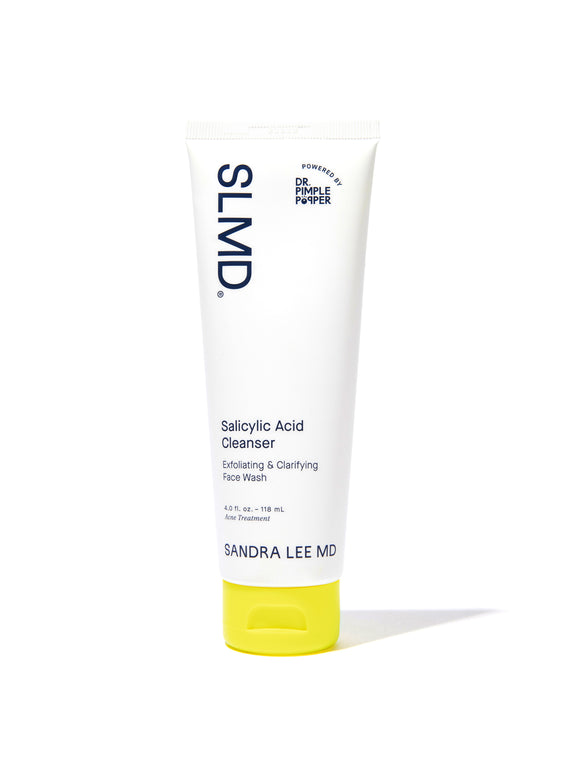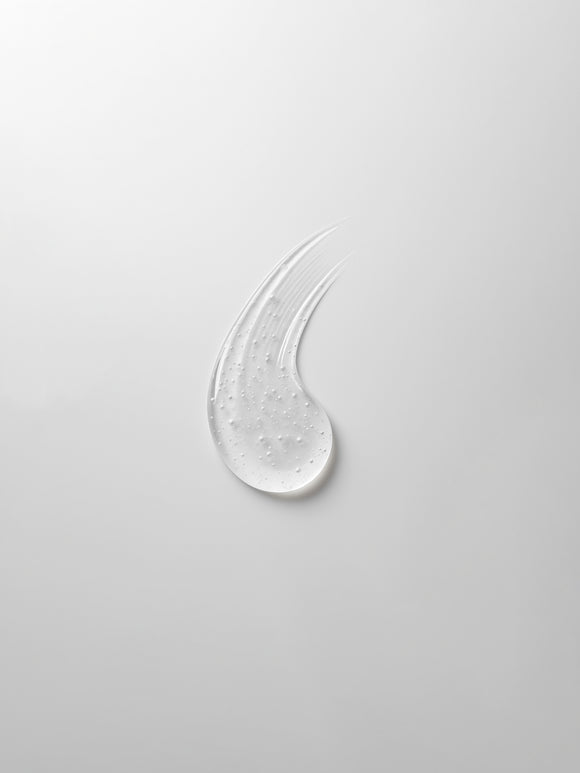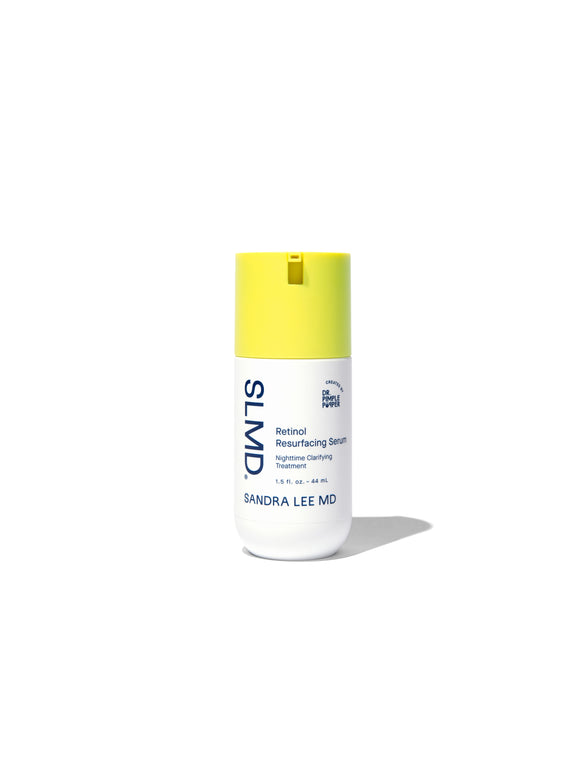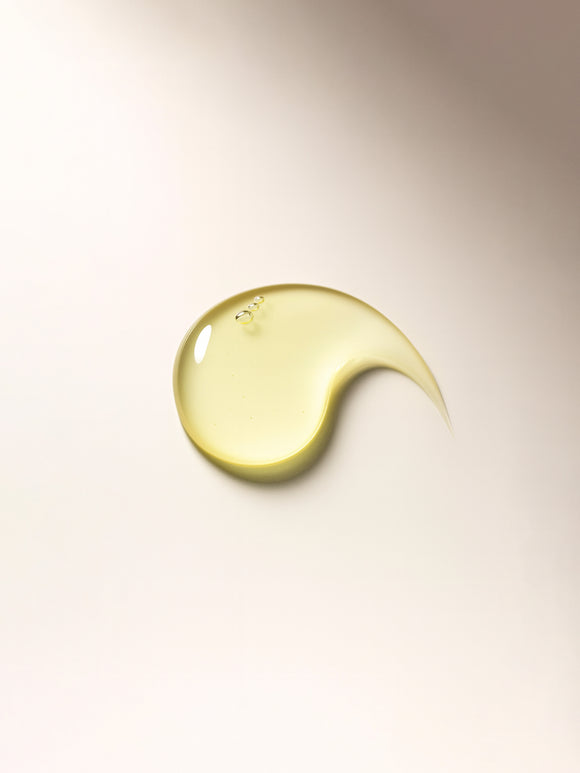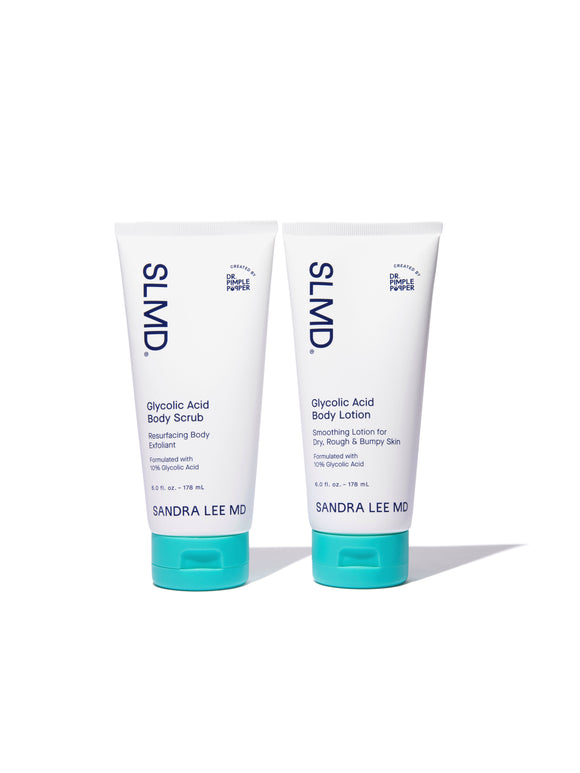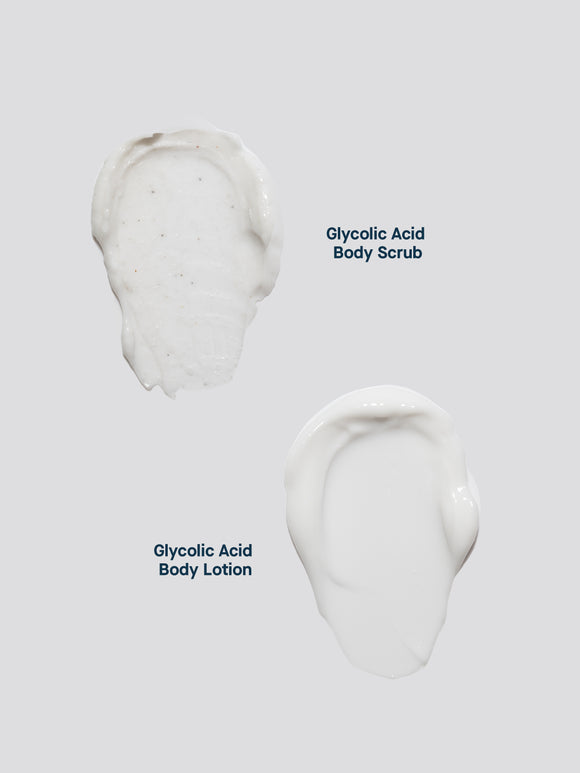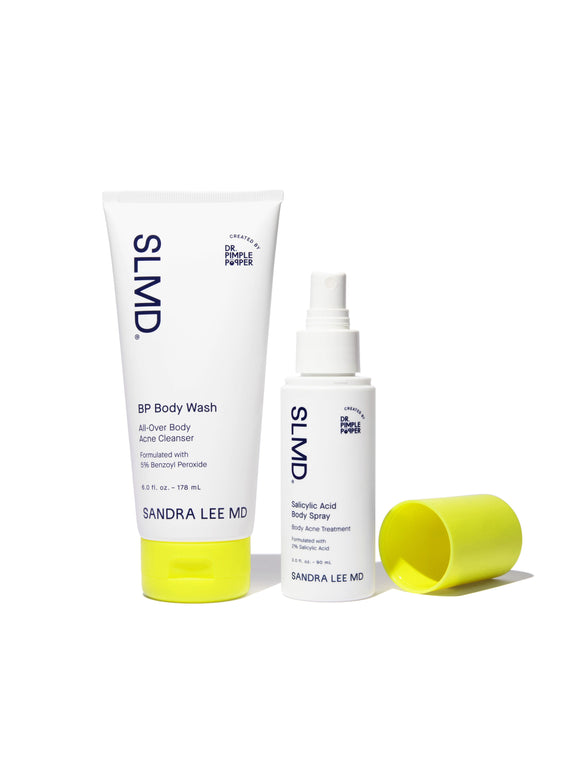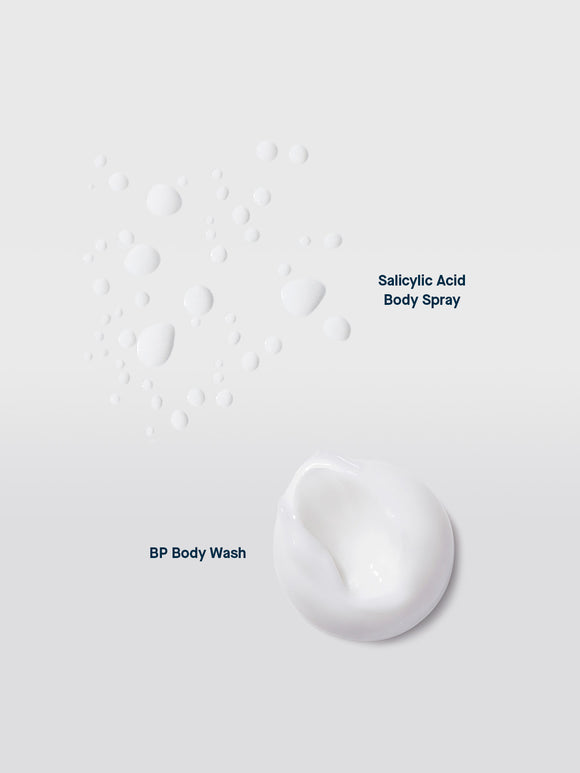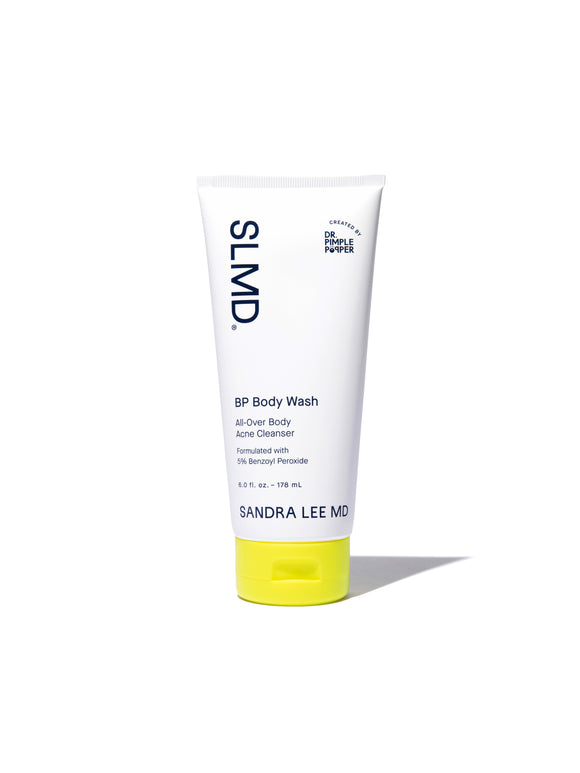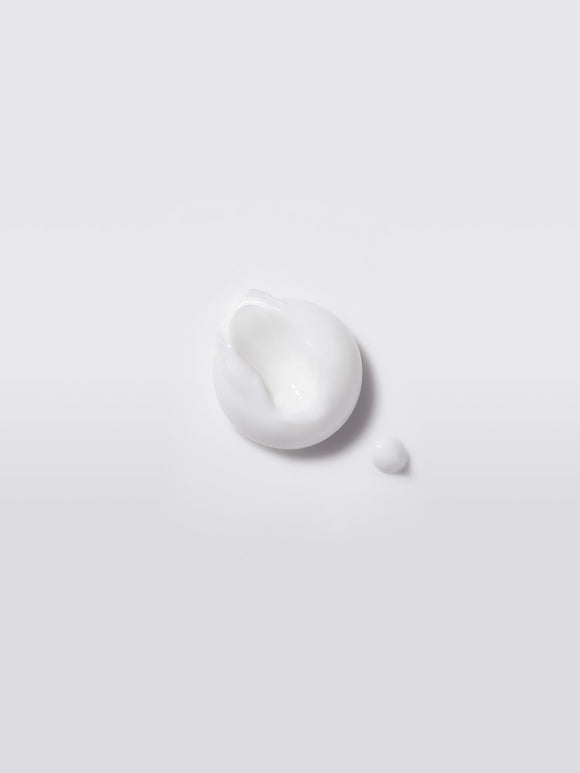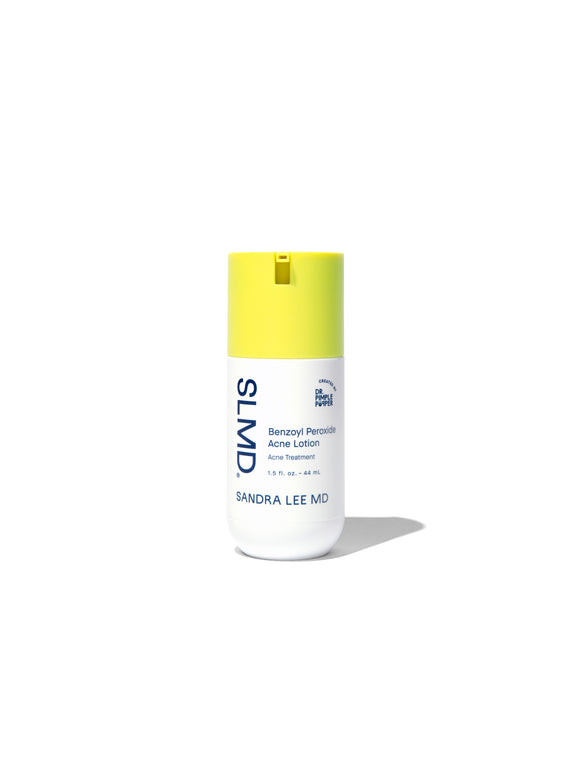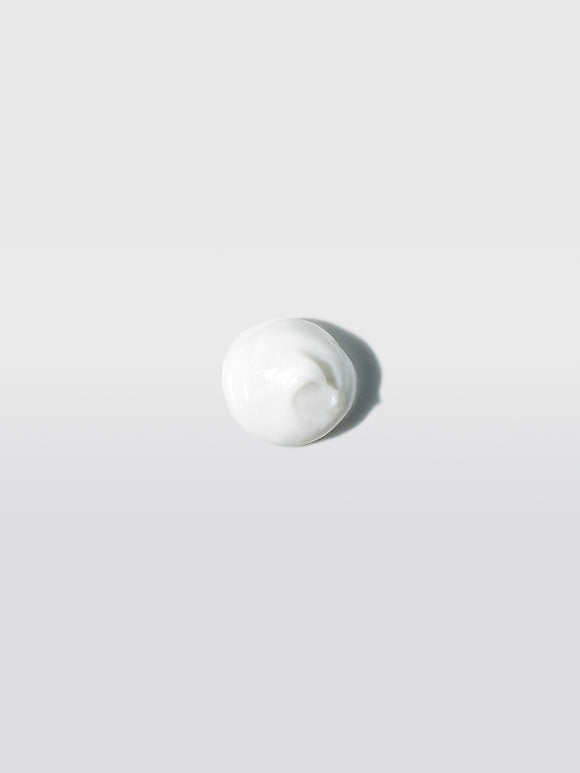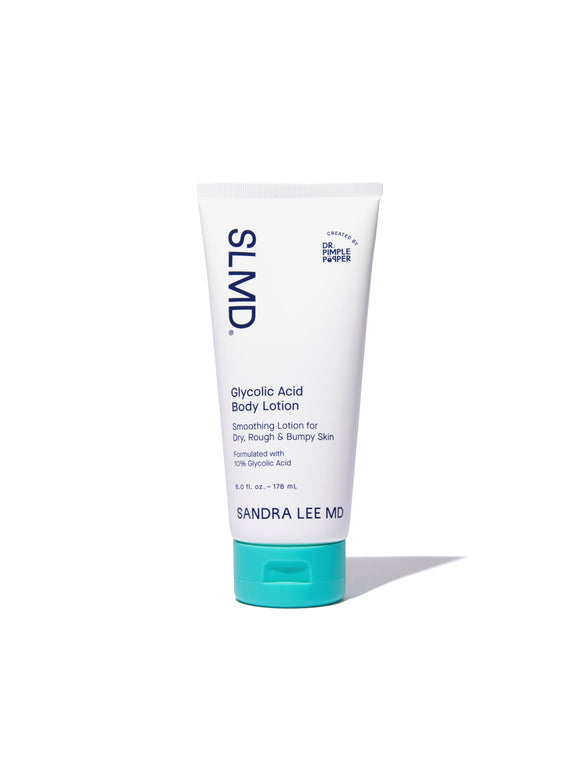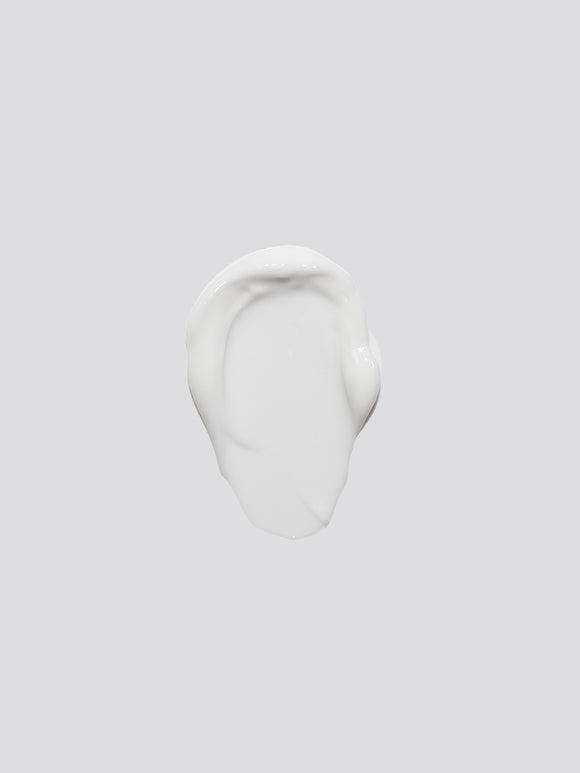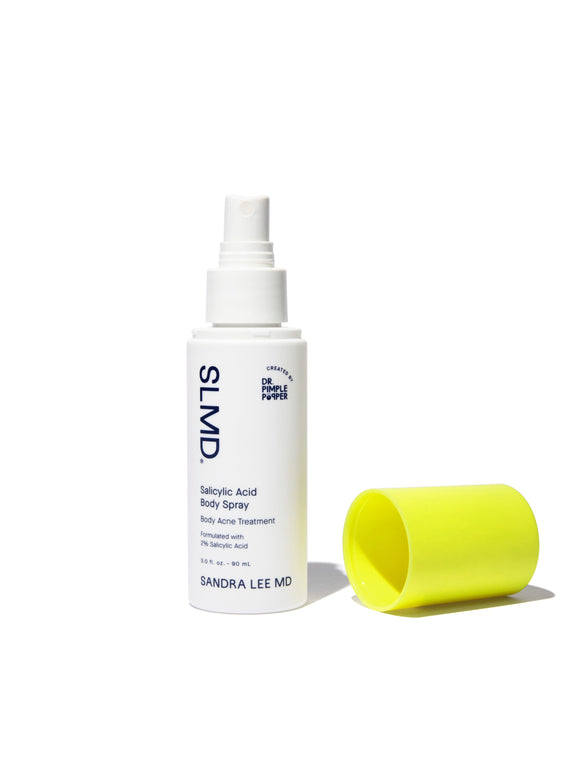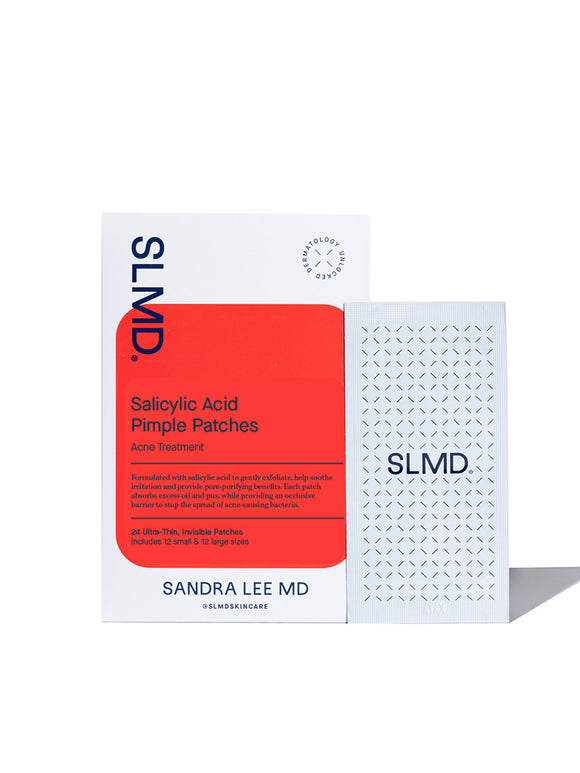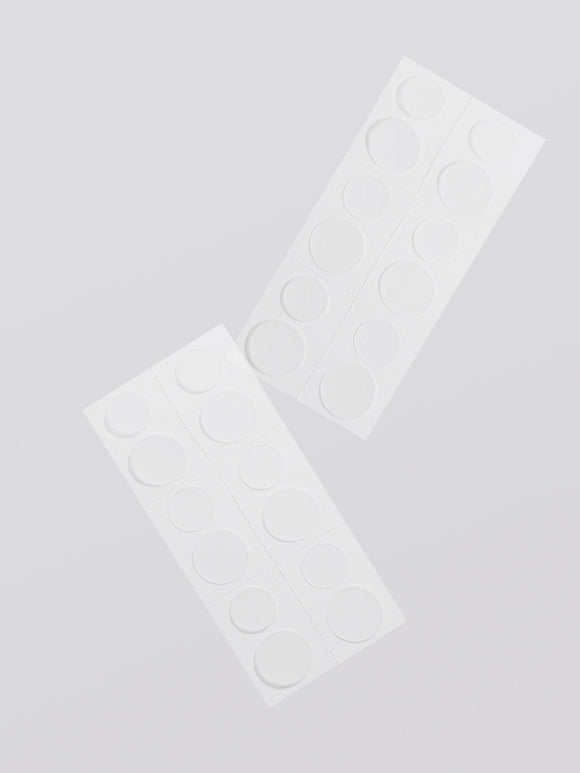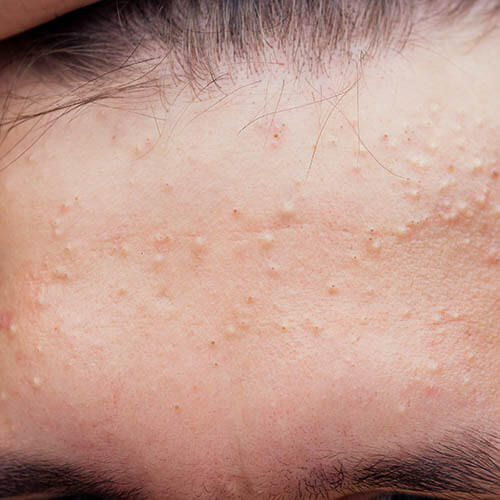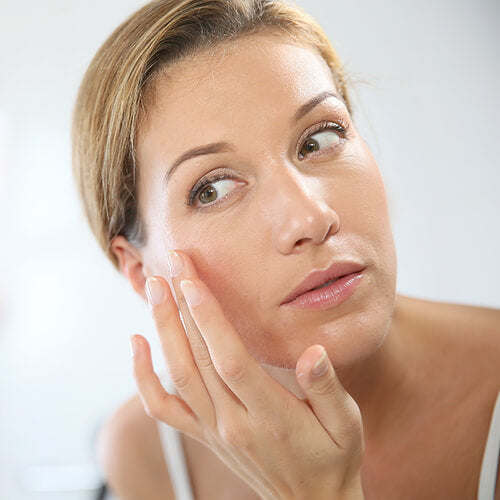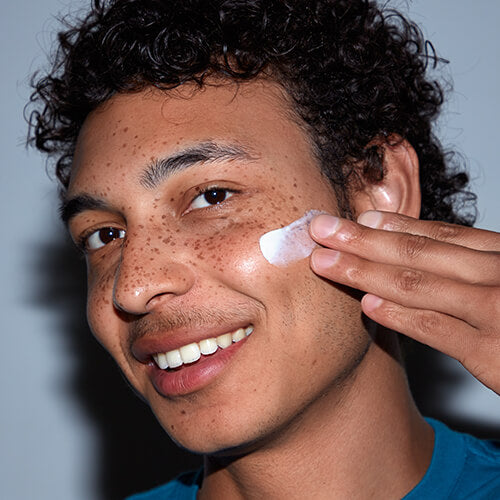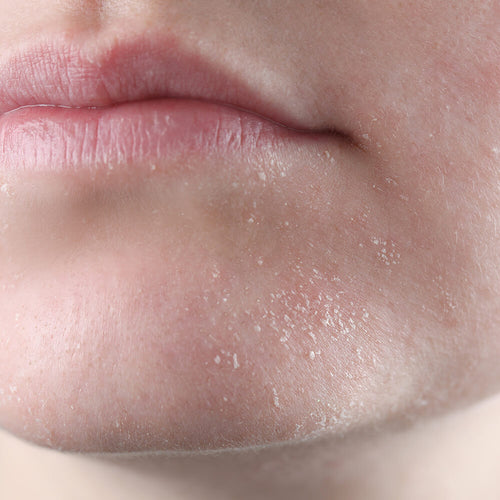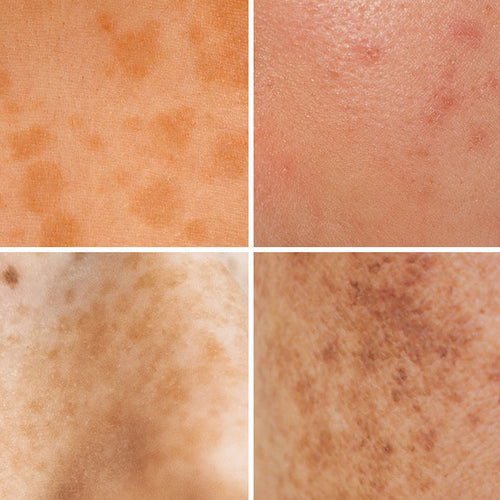
Keratolytic Agents vs. Exfoliating Acids: A Dermatologist Explains the Difference
Dr. Pimple Popper breaks down everything you need to know about these multitasking actives.
Published:
4 minute read
In skincare, not all exfoliants are created equal. Dermatologists often use the word keratolytic to describe a group of ingredients that go beyond basic exfoliation.
But do you actually need a keratolytic in your routine? Are they the same thing as exfoliating acids, or something more? SLMD Skincare founder Sandra Lee, MD (aka Dr. Pimple Popper) explains how these powerhouse ingredients overlap, and why dermatologists rely on them to treat both everyday skin concerns and medical conditions.
Fast Facts: Keratolytic agents
- What they are: ingredients that help skin shed built-up cells
- Examples: acids (like salicylic and glycolic) plus non-acids (like urea and sulfur)
- Why they matter: support clearer, smoother, healthier-looking skin
Article Quick Links
What are keratolytic agents?
Dermatologists use the term keratolytic to describe ingredients that help loosen the “glue” holding dead skin cells together. By breaking these bonds, keratolytics make it easier for skin to shed naturally, leaving it smoother and clearer.
Common keratolytic ingredients include:
- Salicylic acid (BHA)
- Benzoyl peroxide
- Alpha hydroxy acids (AHAs) like glycolic and lactic acid
- Retinoids like tretinoin, retinol
- Sulfur
- Urea
- Enzymes like papain, bromelain
How do keratolytics work?
“Keratolytics help skin shed more effectively, but each ingredient works a little differently,” notes Dr. Lee.
Most act on the outer layer of skin (the stratum corneum). Depending on the type, they may:
- Break down bonds between skin cells so they shed more easily
- Dissolve excess keratin and proteins
- Increase moisture within the skin
- Stimulate cell turnover
- Reduce inflammation and redness
Dr. Pimple Popper's Top Kerolytic Picks
Keratolytic agents vs. exfoliating acids: what’s the difference?
Keratolytic agents are a broader functional category: they describe what an ingredient does (loosen skin cells, reduce keratin). Exfoliating acids are a subset of that category, describing the chemical type (AHAs, BHA, PHAs). Many ingredients — like salicylic, glycolic, and lactic acid — fit into both.
Function vs. Chemistry
- Keratolytic: defines the action (breaks down bonds between dead cells, reduces buildup)
- Exfoliating acid: defines the chemistry (an acid-based exfoliant)
Scope
- Keratolytics: include acids and non-acids (urea, sulfur, retinoids)
- Exfoliating acids: limited to acids only
Effects
- Keratolytics: can also hydrate (urea), normalize turnover (retinoids), and reduce scaling in medical conditions
- Exfoliating acids: smooth and brighten by accelerating shedding
Benefits of keratolytic skincare ingredients
Keratolytic agents are multitaskers in skincare, delivering visible results across common concerns. Benefits include:
- Acne control: unclogging pores, reducing excess oil, calming redness
- Texture improvement: softening rough patches (like keratosis pilaris )and smoothing uneven skin
- Hydration boost: improving moisture retention, especially with ingredients like lactic acid and urea
- Anti-aging effects: supporting cell turnover to minimize fine lines and wrinkles
- Brightening and tone: fading dark spots and hyperpigmentation for a more even skin tone
These results explain why keratolytics are staples in over-the-counter cleansers, toners, and serums.
Which keratolytic agents should you use?
“The best keratolytic really depends on your skin type and concern,” says Dr. Lee. “Dermatologists typically reach for a handful of well-studied options that cover the most common needs.”
These include:
Salicylic acid (BHA)
- What it does: dissolves oil and debris inside pores while exfoliating the surface
- Best for: acne-prone and oily skin
- Common forms: cleansers, toners, spot treatments, pimple patches
- Try: SLMD Salicylic Acid Cleanser, SA Acne Spot Treatment, Salicylic Acid Pimple Patches
Glycolic acid (AHA)
- What it does: exfoliates outer skin layers, improves tone and texture, boosts hydration
- Best for: dullness, uneven texture, keratosis pilaris
- Common forms: toners, peels, body scrubs
- Try: SLMD AHA/BHA Swipes, Glycolic Acid Body Scrub, Glycolic Acid Body Lotion
Lactic acid (AHA)
- What it does: gently exfoliates while drawing in moisture
- Best for: dry or sensitive skin; early signs of aging
- Common forms: lotions, serums, body treatments
- Try: SLMD AHA/BHA Swipes
Retinol
- What it does: increases cell turnover, reduces buildup, smooths tone and texture
- Best for: both acne management and anti-aging concerns
- Common forms: night serums, creams
- Try: SLMD Retinol Resurfacing Serum
Benzoyl peroxide
- What it does: kills acne-causing bacteria and helps shed dead skin cells
- Best for: inflammatory acne
- Common forms: washes, gels, lotions, spot treatments
- Try: SLMD Benzoyl Peroxide Acne Lotion BP Acne Spot Treatment , BP Body Wash
Urea
- What it does: softens keratin buildup and increases hydration
- Best for: rough, thickened, or flaky skin
- Common forms: creams, ointments, toners
Sulfur
- What it does: mild keratolytic with antibacterial and antifungal properties
- Best for: acne, especially in sensitive skin types
- Common forms: masks, lotions, cleansers
How dermatologists use keratolytics
“Keratolytics aren’t just cosmetic,” says Dr. Sandra Lee. “In dermatology, we rely on them as part of treatment for a wide range of skin conditions.”
These include:
- Acne
- Psoriasis: reducing scaling and thickened plaques
- Keratosis pilaris (“chicken skin”): softening bumps on arms and thighs
- Warts, corns, and calluses: dissolving excess keratin buildup
- Dandruff and seborrheic dermatitis: decreasing flaking and scalp irritation
Frequently asked questions about keratolytic skincare
Q: Is “keratolytic” just another name for “exfoliating acid”?
A: Not exactly. Keratolytic is a functional label (what it does); exfoliating acid is a chemical label (what it is). Many acids are keratolytic, but some keratolytics (like urea, sulfur, retinoids) aren’t acids.
Q: Which keratolytic ingredients work best for acne?
A: Salicylic acid is a top choice, since it’s oil-soluble and penetrates pores. Benzoyl peroxide and sulfur are also effective at managing acne-causing bacteria.
Q: Can sensitive skin use keratolytics?
A: Yes, but stick with gentler ones like lactic acid or urea. Introduce slowly and watch for irritation.
Q: Do I need both keratolytic agents and exfoliating acids in my skincare routine?
A: Not necessarily. Exfoliating acids are a type of keratolytic, so you only need the right ingredient for your concern.

Dr. Lee's Last Word
Keratolytic agents work to help speed up the shedding of dead cells that build up on the surface of your skin. I recommend using ingredients like salicylic acid, glycolic acid, and retinol because they work for a variety of skin concerns, like acne, keratosis pilaris, and signs of aging.



